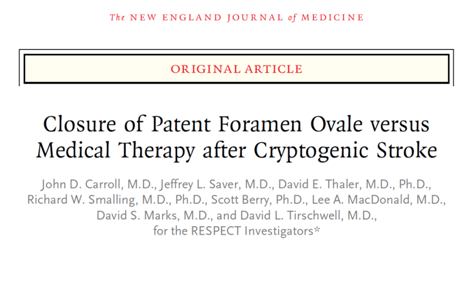When the topic of stroke is being discussed, for the most part it is the concept of “blockages” developing within in the arteries of the brain – that is, the blood vessels that are carrying oxygen-rich blood *to* the brain to nurture its cells. These blockages can occur from the formation of blood clots, plaque build up, dissections (tearing of the lining of an artery’s wall and blocking blood flow), or a number of other rarer phenomena. Put simplistically, when these blockages occur, blood cannot supply a portion of the brain, and those brain cells, known as neurons, then die from the lack of oxygen and nutrients.
After blood cells have delivered oxygen to neurons, they then need to leave the brain to return to the heart, then travel from the heart to the lungs in order to pick up more oxygen, and thus repeat the cycle of oxygen delivery to the brain and other organs. Blood leaves the brain through drainage systems called cerebral venous sinuses (effectively large veins). Much less frequently than the development of blockages in the arterial system (about 2% of all strokes), blood can clot within these venous sinuses, resulting in what is known as a cerebral venous sinus thrombosis (CVST). When venous sinuses are blocked because of obstructions caused by blood clots within them, blood struggles to leave the brain and backs up, which can lead to brain swelling, bleeding, and in severe cases, coma and death. I discussed this topic in 2016 in the context of the US presidential election (click here if interested in reading more).

The standard treatment for CVST has typically been to place patients on anti-clotting medications (known as “anticoagulation”), such as heparin, enoxaparin (Lovenox), warfarin (Coumadin), or more recently, physicians and healthcare providers are starting to use the newer anticoagulants such as dabigatran (Pradaxa), rivaroxaban (Xarelto), or apixaban (Eliquis). Most patients with CVST present to doctors or healthcare providers awake and thinking coherently, but can commonly experience severe headaches, blurred vision, and nausea and/or vomiting from the pressure that is building up within their heads as blood backs up and cannot drain. However, some patients come to medical attention with much more severe presentations, such as with difficult-to-treat seizures, severe confusion, or in comatose states. In this group of patients, at times doctors have gone with a more aggressive treatment approach, in which a wire catheter is inserted into the patient’s groin region and is threaded up to the site of the clot within a venous sinus of the brain to try to physically remove the clot. This is called a thrombectomy (“thrombus” refers to clot and “-ectomy” refers to the break up and removal). In some cases, t-PA, the “clot-busting” drug that can be used for arterial strokes, is infused at the actual site of the clot through the tip of the catheter in an effort to help dissolve a portion of the clot as part of the effort to physically remove it. Thrombectomy procedures have loads of data to support their use in carefully selected eligible patients who have obstructions in certain arteries of the brain, but had not previously been studied in a randomized clinical trial format in patients with severe CVST presentations.
Because CVST with severe clinical presentations are relatively rare, they have been traditionally difficult to study in order to determine whether these patients have better outcomes with only anticoagulation or with anticoagulation plus a more invasive procedure (thrombectomy and/or t-PA being infused into the clot, as described above). However, there is now a published clinical trial to offer some guidance in this scenario.
The TO-ACT trial was performed at eight hospitals across three countries, and was able to enroll 67 such patients presenting with CVST and severe clinical symptoms/findings. The primary outcome (the “final result” to see if the more aggressive treatment was a success compared to standard therapy) was to evaluate the number of patients at the end of 12 months who were normal neurologically or very close to normal, meaning they were fully independent and getting on with life. Thirty-three patients received anticoagulation plus they underwent thrombectomy, t-PA infusion, or both, while 34 patients only received only anticoagulation (no thrombectomy or t-PA). At 12 months, there was no difference in outcomes between the two groups. Going into the trial, the severity of symptoms/presentation was the same between the two groups of patients. Four patients died in the thrombectomy group, and one died in the anticoagulation only group, but the difference was not statistically significant (meaning, this difference could be due to chance, since the sample size was relatively small).
The authors of the study acknowledge that perhaps another larger study should follow. Let’s face facts, though – it is really difficult to enroll patients in a trial that is studying a relatively uncommon phenomenon. I personally find it impressive that this feat was able to be accomplished, and respect the persistence and determination among the investigators to bring this study to the finish line so that some guidance and insight could now be available into how to manage these patients. I have personally seen patients who show up in comatose states, looking very neurologically ill with CVST, who have done extremely well on anticoagulation, compared to how they appeared when diagnosed. I have seen others with “mild” presentations who have suffered with chronic headaches and other negative quality-of-life aspects that can really drag them down as they juggle life’s daily demands.
My bottom line with CVST is that earlier diagnosis is better. Once the diagnosis is made and patients are started on anticoagulation, the majority of people will go on to lead independent lives with their autonomy intact. It is a condition, unfortunately, that is frequently misdiagnosed, and it is tragic when the diagnosis is later made after seizures, coma, brain hemorrhage, or death occurs. Early diagnosis and treatment is perhaps the most critical factor in achieving good outcomes.















